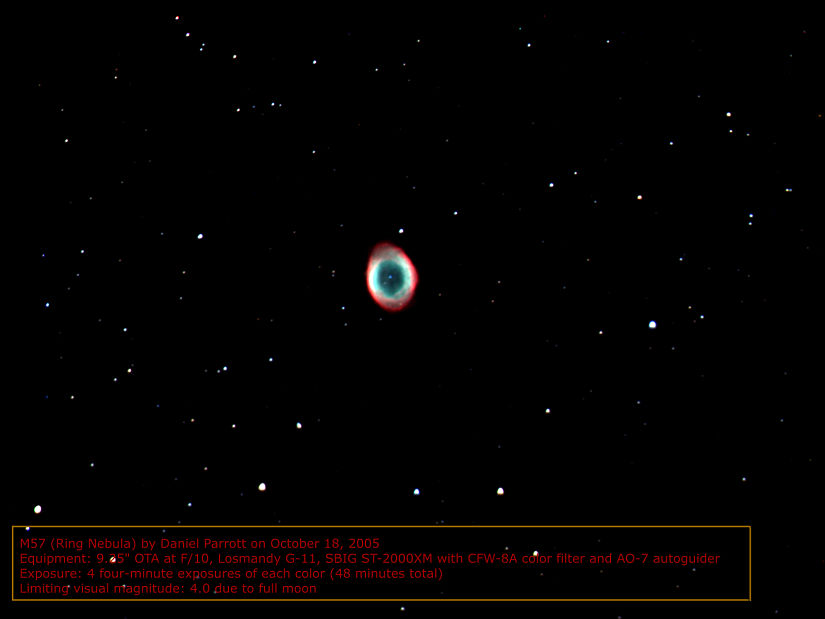Brilliant developer of powerful asteroid searching tool
There are no hard times for good ideas.
Harry Gordon Selfridge
As a 10 years old, he became interested in programming and wondered if he could create his own program. Two years later, he received his first telescope, which he later replaced by more powerful ones. He enjoyed visual observations and was stunned by his own astrophotographs. As he wanted to do computer science, he studied programming and today he creates algorithms used in air traffic. He showed that initially crazy idea how to track asteroids can work and so proved that discovery of asteroids by amateurs is not over yet. The author of an exceptional software for NEO detection,
Daniel Parrott.
What is your profession, your day time job?
I work on developing modifications and enhancements to the algorithms used by air traffic radar systems. As an example, one modification I did was to improve the detection of aircraft over wind farms. The rotating blades of the wind turbines produce a Doppler return that shows up as clutter on the radar, and so it can be more difficult to detect aircraft over such regions. The solution I came up with, which is currently in use today, involves an adaptive thresholding process that substantially reduces the false positives from the wind turbine detections while maintaining those from actual aircraft. It is interesting and fun work.
When did you become interested in astronomy?
This journey for me started when I was 12 years old. I had seen the advertisements for the Meade ETX "Go To" telescopes, and I had to convince my parents to buy one. It just seemed like such a cool telescope to have. So I started drawing sketches of the moon from what I could see using a pair of binoculars, and eventually they gave in and actually bought me a Celestron NexStar 8. I still remember nights with that telescope, out in the quiet backyard to myself and pondering what target I might want to look at next. With the telescope control pad in my hands, and a list of observable targets to choose from, it provided a really cool tour of the night sky.
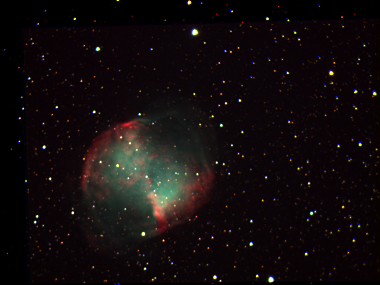
Then a few years later at age 15, I saved up all my money from the summer and bought a 15" Dobsonian telescope. It did not have any motors or electronics, but instead I had to become familiar with how to read star charts in order to know where to point it. It offered a really mesmerizing look at M13. Then a couple years later I somehow managed to convince my parents to get me a telescope system to do astrophotography: a Losmandy G11 mount, Celestron 9.25" Schmidt-Cassegrain telescope, and an SBIG 2000XM with adaptive optics (AO-7). I still remember how stunned I was at the first images it came back with, it was just so incredible to see all this detail it captured that you could never see through visual observation alone.
Did you consider to be become a professional astronomer? If not, why?
My first passion was and remains programming. I love programming. I started it even before astronomy, at the age of 10. My brother was taking a course in high school and I saw what he was able to do with it, the kind of programs he was able to create. I had been, even at that age, very curious at how computers work and wanted to see if I could create my own programs. So we went to the bookstore together and got a book on programming, in fact I still have it in my collection to this day: "Sams Teach Yourself C++ in 24 Hours".
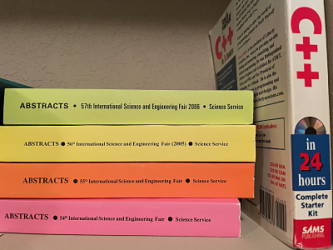
Now, you might think, no one can learn a language, especially C++, in 24 hours.
But these were 24 chapters that each provided very good examples of the materials it taught. And for me, that is the best way to learn, by example. I could code in the example from the book, run it, make a change or two, and instantly see the result. This allowed me to make rapid progress and learn a lot. But for it to remain an interest, I had to do something with this hobby. So when it came time to do science fair projects at school, I knew I wanted to do a project that involved programming.
To really answer the question, when it came time to decide what to major in for college, I knew I wanted to do computer science, because I could really excel at that and I am very good at working with data. I would probably also enjoy certain aspects of professional astronomy, but I think I like where I wound up today, where I am able to leverage my expertise in writing software to study and analyze astronomical data.
Do you remember your first astronomy book? Which one is your favourite?
Yes, Peterson Field Guides Stars and Planets, with the gray cover. It has nice atlas charts, and provides some history of the constellations. I do not have any particular favorite book on astronomy. However, I never fail to be engaged when reading a copy of the Sky and Telescope magazine.
Did you have some hero astronomers - people you admired and were an inspiration for you?
When I began Tycho, it was really just a small project to experiment with some data I had collected, to see what I could do with it. And I knew next to nothing about asteroids at the time. But seeing a few pixels move across the image and realizing that those were associated with light reflecting off an asteroid - that was really cool. So I reached out to some members on an online forum about this tool I was developing, and one person in particular was really helpful: David Rankin. In spite of the fact that I was a complete novice in the field, he was patient enough to lend me his expertise and also provide some of his own data, which was very useful. I was able to quickly learn a lot thanks to him, and I think without his mentorship early on, Tycho would not have succeeded.
Another inspiration came not from an astronomer, but from watching the TV show "Mr Selfridge". This show depicted the development of a new kind of department store, but what was inspiring was its focus on the real-life person Harry Selfridge, who in spite of all kinds of challenges was able to persevere. Similarly, I had many setbacks and challenges with Tycho, but seeing others find it useful has given me continued inspiration to keep developing it.
An asteroid with a very special number 200000 was named after you. What does it means to you?
Well the number itself is nice because it is easy to remember, and not very many numbered asteroids are a multiple of 100000. But in other respects, it means that I had contributed enough to the field to earn the distinction of having an asteroid named after me, so it was very cool to see this take place. I remember when doing science fair, I had gotten to the international level (this was back when it was the Intel ISEF), and they would announce some students would have asteroids named after them. I was not one of the few selected at the time. However, after all these years later, I finally have one named after me.
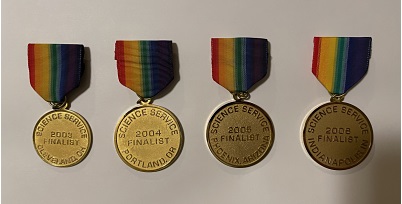
The Intel ISEF (International Science and Engineering Fair) is an annual science fair in the United States. With what project did you enter the competition? Was this experience useful for you?
I actually participated as a finalist for all four years of high school. But I always remember my first project the most, which I entitled "Making a Picture Worth More Than a Thousand Words". I had created a program that could load an image and modify it according to a set of data specified by the user. The end result being a new image that appeared visually identical, but when compared to the original image would allow the data to be recovered. So this was a form of steganography, but rather than setting the pixel values, it actually subtracted from them; in other words, one needed both the original and modified image to retrieve the hidden information. Science fair was a pivotal moment for me, as it encouraged me to pursue computer science more than I would have otherwise. And the ISEF specifically, it is a real treat to be a finalist. I still remember my booth number that first year, CS040. And it was also the first time I had flown on an airplane, going away from home and seeing this crowd of around a thousand other students, including many from other countries. It was a really awesome experience.
Tycho Tracker is an exceptional and very efficient asteroid detection software that uses so-called synthetic tracking.
Can you explain the principle of syntentic tracking?
At a basic level, synthetic tracking is akin to a "brute force" approach, where you attempt to search a wide range of motion vectors and shift the images accordingly. At each trial stack, you then extract candidate detections. Finally, you rank these detections and from there you can determine if any might be a candidate discovery. Of course, the actual implementation is tricky, because you cannot have too many false detections (otherwise the observer would give up), and you need it to be fast enough so as not to take several days to go over a single night of data. So the algorithm has to be finely-tuned for both performance and quality of results. The paper by Dr Ari Heinze on "Digital Tracking" provides a very good overview of the topic.
You are the author of Tycho Tracker. How did the idea of it come about?
I would say, the idea itself began in 2018. The previous year I had finished writing a video game and so I needed to start another project to keep myself busy. Well, I knew I wanted to do a programming project that involved astronomy, and I recalled participating in a programming competition a few years back in 2014, a two week competition called "Asteroid Data Hunter". I learned a lot in those two weeks and so I thought I could try and apply what I learned there. By 2018 I had moved to a suburban location where there is a decent amount of light pollution so I opted to try out an online telescope service called "iTelescope". I could not find a way to capture just four images of a field, with gaps between them, which is what you typically do when using the "classical" detection technique. So instead I let it take 60 images in succession for an hour. This turned out to be a good thing because I would later submit these images to an online forum and someone remarked that I could try stacking the images relative to the motion of the asteroid.
Well, when I did that, I was really surprised at how the asteroid stood out compared to the stars - it was really noticeable. Sure, I was familiar with the technique of stacking for astrophotography, but never thought to apply for a moving object. So then I thought, why not apply this approach in the search for new asteroids? Here you would have to search using a large number of motion vectors (potentially thousands) as the motion of these asteroids would be unknown. It did seem like a crazy idea since stacking is itself an expensive operation (to use a computer science term). But fortunately, computer graphics cards had just started to become powerful enough to make this a viable idea. So I tried it out, and sure enough I started to get some really good results with it.
I did some additional reading on the topic and as with most ideas, as crazy as it was, it was not entirely new - there were already a few papers on the topic by then. But one paper was focused on the detection of a single Near Earth Object (NEO) using a very expensive camera and was not optimized for detection of slower objects. The other paper was able to detect the slower objects, but was not able to make use of GPU processing, so it took them 50 days to process two nights of data. So while the idea itself was not entirely new, its implementation and how to optimize it was very much new. This is how I started Tycho, and since then I have begun adding additional features such as photometry and period search to make it appeal to a wider range of astronomers.
During coding you worked also with data obtained through a 127 mm refractor. It was a set of 50 images with a three-minute exposure. Using synthetic tracking you identified 281 asteroids in a single 3x3 arc field. Did that surprise you?
It was a surprise to see that many, yes. I knew there would be quite a few given that I was observing at the ecliptic, but it was a pleasant surprise to see that the instrument could reach magnitude 20.8 using this technique, and thus return that many asteroids in the field.
What was the biggest obstacle during coding?
It is difficult to pin it down to a single obstacle, there are always numerous and ongoing obstacles in terms of what is the best approach to a given problem. But one example would be something that should be simple, but turns out to be rather difficult. This was the case when creating the panning (arrow) buttons for the Image Viewer. These buttons, when clicked, allow the user to navigate the image one pixel at a time, for very precise centering of a given object. Ideally, there should be zero latency when the user clicks the button to when the image is moved. However, the default "CButton" class, when used in combination with bitmap images, produces a mild but very noticeable delay, preventing rapid clicking of the button. So to remedy this, I had to create a subclass of that object and modify its behavior manually. There are numerous examples of this: things that should be easy, but turn out to be a lot of work.
The official release of the TYCHO TRACKER was October 15, 2018. What did you feel at that moment?
At this point it was still in the early stages of development, and almost more of a prototype, so I was not expecting or feeling anything beyond just a curiosity as to how others might use it, and what kind of features they would find useful. But seeing that others were starting to find the program useful was certainly exciting, and encouraged me to continue its development.
Do you remember the first person interested in your program?
The first person to really give it a try and provide useful feedback would have been David Rankin.
How much time elapsed between your initial idea and the first discovery using Tycho?
The first Near Earth Object ever discovered using Tycho came about from Mark Holbrook, an astronomer in Alabama, USA. He discovered 2020 MO4 in June of 2020, almost exactly two years after I started development of Tycho. And since then, almost 90 NEOs have been discovered using Tycho, making it the most productive software for NEO search available to amateur astronomers. In fact just last year in 2021, station W94 discovered 56 NEOs, ranking them the most productive amateur asteroid survey and #4 in the world (the top 3 are professional NASA-funded surveys: Catalina Sky Survey, PanSTARRS, and ATLAS).
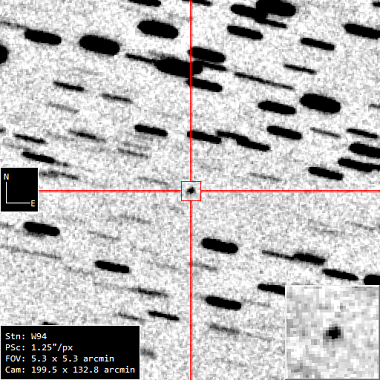
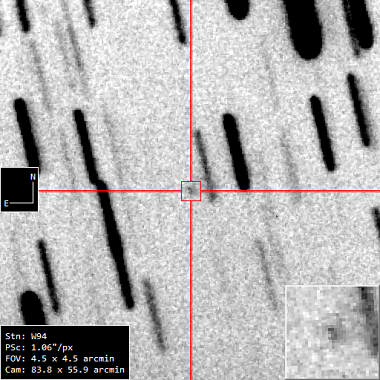
Is synthetic tracker/Tycho used also by professionals?
Yes, it is currently used by Catalina Sky Survey to assist with the recovery of newly discovered Near Earth Objects. Last year, there were at least 15 objects that they were only able to recover with the help of Tycho.
I have noticed that your name appears in the Measurer line of several MPECs along members of the Catalina Sky Survey. What has been your
contribution to CSS?
Yes, David Rankin has graciously credited me as the measurer for those objects where recovery was made possible using the Tycho software.
You mentioned the success of the observatory under the name W94. Beneath this lies the MAP research project. Its goal is to search for asteroids by using small telescopes with a wide field of view, CMOS digital cameras and innovative data processing techniques. The name originated from the first letters of the surnames of three amateur astronomers: Alain Maury, a retired French astronomer, another Frenchman, George Attard and a trio is completed by you. When did your collaboration start and how did the project actually come about?
I reached out to Alain in the early stages of developing Tycho. I had come across his web page and thought he might be interested in trying out synthetic tracking. It has turned out to be a very good fit. He has done a great job at maintaining the telescopes, coordinating, and of course is very knowledgeable with his own professional background of astronomy. And Georges has been terrific at developing some of the pipeline software to extend the automation even further. So it has a been a great collaboration and we have made numerous discoveries, especially for what is currently just two 28cm telescopes. We hope to be able to add more in the future.
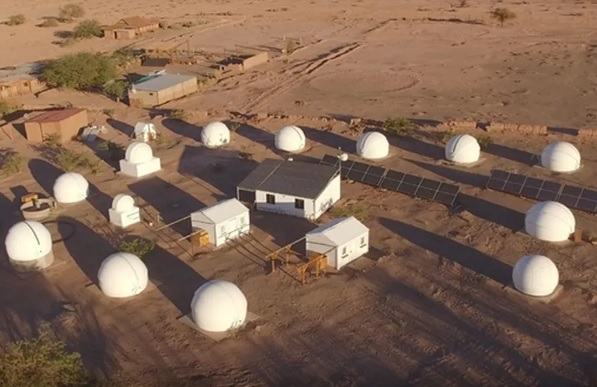
Your project received MPC code W94 in September 2020, and a month later you discovered your first Amor type of NEO, 2020 UN6. Did you have a big celebration?
Yes, we were very excited to get confirmation that our process was working, it was a big first step!
You have discovered a number of NEOs and even 2 comets last year, so TYCHO is perfect for NEO hunting. Can Tycho identify also moving objects with a small speed? What about TNO?
It is actually 56 NEOs that were discovered in 2021, Alain has maintained a web page to keep track of these discoveries. Yes, it should also be able to detect slow moving objects. We would need to adjust the observing routine if we were interested in detection of TNOs.
You use two telescopes 0.28 + CCD. And you are planning another two 0.36 telescopes. What drives you to further improve this already perfect system?
Alain had planned from the start to accommodate four RASA telescopes, so we hope to have another two online this year depending on a grant. As far as motivation to improve it, we have done the hard part of developing the software and pipeline and testing it. Adding two more scopes would effectively double the number of discoveries, at relatively little cost. In fact, that is what is so great about synthetic tracking, it has the lowest cost per discovery of any technique, as 28cm RASA telescopes are easily an order of magnitude less expensive than what would be required to reach equivalent limiting magnitude using the classical detection technique.
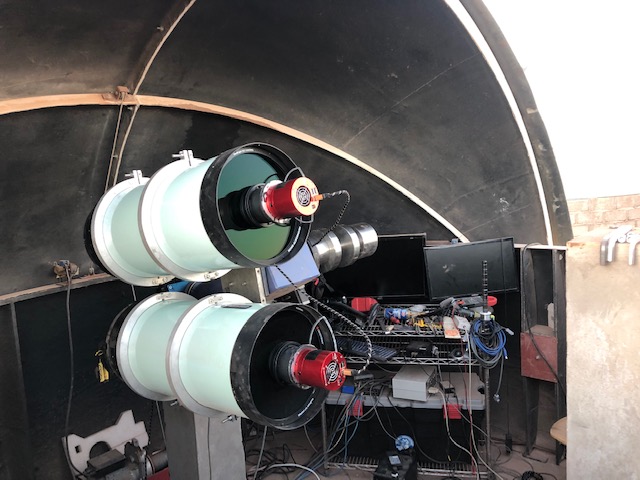
Do you personally participate in the evaluation of observations?
I have logged on to the observatory computer and watched the images undergo processing in real-time, it is pretty cool to see the data reduction take place.
I have just occasionally participated in the evaluation of observations, totalling probably around 5 nights last year. Generally it is Alain and Georges who do most of the observation work. My task is primarily to keep up with features on the Tycho software. I find it more productive for me to be involved in the development of the software, rather than staying up late looking at the images (even though that can be exciting at times).
Even with all of the automation, when you are trying to detect objects that are just at the noise floor, it still helps to have a human observer. This is because the field of view is so large, and we cover so much sky, that even if you manage to get the false detect rate down to 1 in a 1000, you wind up with so many detections just because you have covered that much sky. So not all of them will be true, unless you were willing to set your threshold higher, in which case you would also lose out on some real detections. So it is a balance. And we have found a good workflow of determining which ones to submit for follow up observation.
Two comets, C/2021 J1 (Maury-Attard) and P/2021 U3 (Attard-Maury), were discovered by MAP project last year. Will we have Comet Parrot too in the future?
Those comets were discovered by Alain Maury and Georges Attard while looking through candidate detections. For there to be one named after myself, I would need to be involved in its discovery, which could happen, but I have not yet had time to devote to ongoing nightly observation sessions while simultaneously developing the software.
Have you met your partners from MAP personally?
We have met on Skype, but that is it so far. I might take a trip to Chile in a few months from now, in which case I could meet up with Alain. As I have never been outside the US before, it would be an interesting experience.
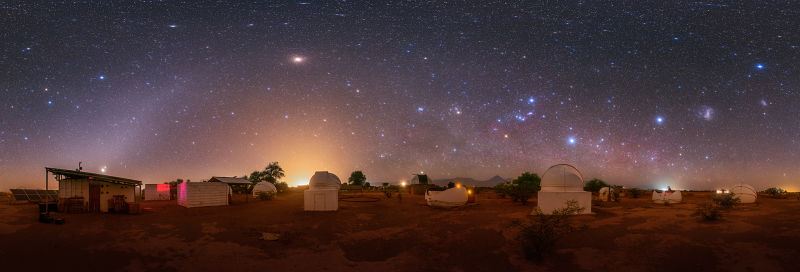
Tycho stacks images in thousands of different ways to identify object of unknown motion. That must be time consuming, so it certainly requires a fast computer with large memory and a quality graphics card. What hardware do you recommend?
When I first started developing Tycho in 2018, I was using an NVIDIA GeForce GTX 970 graphics card, equipped with 4 GB (in truth, only 3.5 GB) of video memory. Now, a few years later, we have much better graphics cards. But even the 970 is still a good card. It depends on the number and size of the images. If you plan to do synthetic tracking with full-frame CMOS images (120 MB each, or 30 MB binned) then a series of 60 of them will require a lot of video card memory. So in that case, an RTX 2080 or better would be good to have. But for smaller datasets, you could easily use a less powerful GPU and it will still work acceptably.
You need at least 11 images for work. Why not less? How many images is optimal?
The synthetic tracking process uses some statistical analysis to filter out false detections at the front-end, and so with fewer images you have fewer samples to work with. Basically, it operates completely differently than the classical technique. As for optimal, I would say it is nice to have at least 25 images. At the MAP project, we use 36 images, each 30 seconds in duration.
What gives better results, more shorter exposures or less longer?
It depends. If it is a very fast object, you are going to want shorter exposures to prevent trailing loss from what would be a streaked object. So the first goal is to identify how long the exposure can be, before the object starts to produce a streak. Then you decide how long you want to dwell on the field. So if I can do a 60 second exposure, I might want to dwell for 30 minutes, so simply 30 exposures. On the other hand, there is also a limit to how many exposures is practical, in terms of processing and memory constraints. So, it really depends on a number of factors: the speed of the object in question, the faintness (magnitude) of the object, the SNR you wish to achieve on that object, and so forth. I tend not to use more than 60 exposures generally, but there have been some datasets where 200 exposures were used because the object was very fast-moving and thus each exposure was only 5 seconds in duration.
The amateur asteroid discoveries from the main belt are probably
over. However, the new approach of synthetic tracking gives amateurs a
new chance. Even with a telescope with a modest diameter of about 30 cm
you can effectively search for near-Earth objects. If you aim at the
right area of the sky, you can get ahead of the big surveys...
Absolutely. Before I started Tycho, many said that the days of amateurs finding new discoveries were over. But that is no longer the case with synthetic tracking. We are finding many new NEOs and even lots of new main belt asteroids each year.
Astronomers dedicated to asteroids search have been given a very powerful tool. How do you see the future of using Tycho Tracker? Will the synthetic tracking replace the classical detection technique in the future?
I do not think the classical technique will ever be completely replaced, it still has its uses and especially the big telescopes will continue to use it, simply because they can reach that limiting magnitude of 21 or better even just using 30 second exposures. So for them, they want to cover as much of the sky as possible, so they would prefer to just use four images of a given field rather than dwelling on it like what is required by synthetic tracking. That said, synthetic tracking really does offer a much lower cost per discovery than the classical technique. For example, the 28cm RASA telescope costs around 3500 USD, and with ST it can reach mag 21 in 18 minutes or 1080 seconds.
A telescope using the classical technique would need to be at least 1m in aperture to detect objects of equivalent magnitude using the four images, so 120 seconds. Supposing the 1m costs 500,000 USD, it is 142x as expensive, but in fact it can do 9x the sky coverage (less dwell time), then it is still about 16x as expensive. In other words, you could easily have 9 RASA 28 cm to achieve the same sky coverage, and same limiting magnitude, and they would still be 16x less expensive using synthetic tracking. But more exciting is that with this array of telescopes, you could also have some optimized to look for those slow-movers, or TNOs as you asked about earlier. So you get more flexibility and more options with an array of telescopes rather than just one large telescope. Of course, the actual implementation would involve more details, but on the surface the numbers really support the cost advantages of synthetic tracking.
Five years ago you found an exciting new passion – piloting a radio-controlled aircraft models. Since then you flew your FPV aircrafts many times, so you must be a skilled operator. Does it not tempt you to sit in Mission control room at at NASA’s Jet Propulsion Laboratory and control future space probes on another planet or asteroid?
Oh, that would be quite the excitement, to have some level of interaction with something so far away. Granted, the latency between an instruction and a response would have to be factored in, but being able to get some form of feedback or imagery would be interesting for sure.
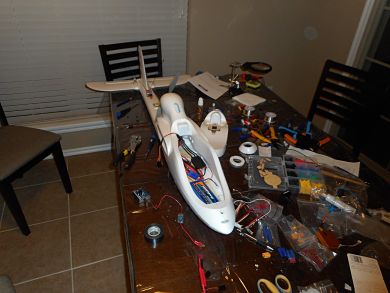
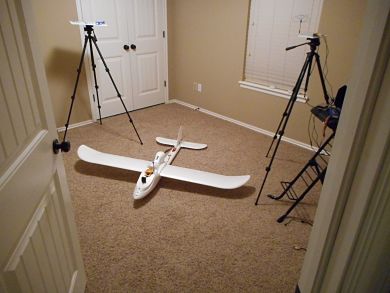
Would you change the remote control of the FPV aircraft and sit in the cockpit of the real plane or even spacecraft and take off?
I think it would be fun to take the controls of a real airplane, at least for just a moment to see what it is like. I have done some time on a flight simulator, and I can envision what it might be like in the real world, but of course actually doing it would be quite exciting. As for a spacecraft, perhaps if it is well-tested -- otherwise I would prefer a simulator! What I like about FPV aircraft is having something that I put together and selected the components for, such as the motor, the receiver, video transmitter, servos, flight controller, and for one of them I also built a bungee launcher. So it is not just the flying aspect, but also the challenge of putting something like that together. And even more, with FPV there is this very vibrant community of other FPVers online, and in forums. You can participate in these discussions and get a treasure trove of knowledge about all kinds of topics including the electronics, airframe efficiency, and so forth. So it really encompasses a lot of subjects and that is what I find so exciting about FPV.
Sometimes you need a break from coding, what is your best relax?
I find going on walks at the park to be a good way to relax and contemplate everything that is going on. Sometimes I also like to listen to music. Truthfully, the name Tycho came about because I am a huge fan of the Tycho music by Scott Hansen.
